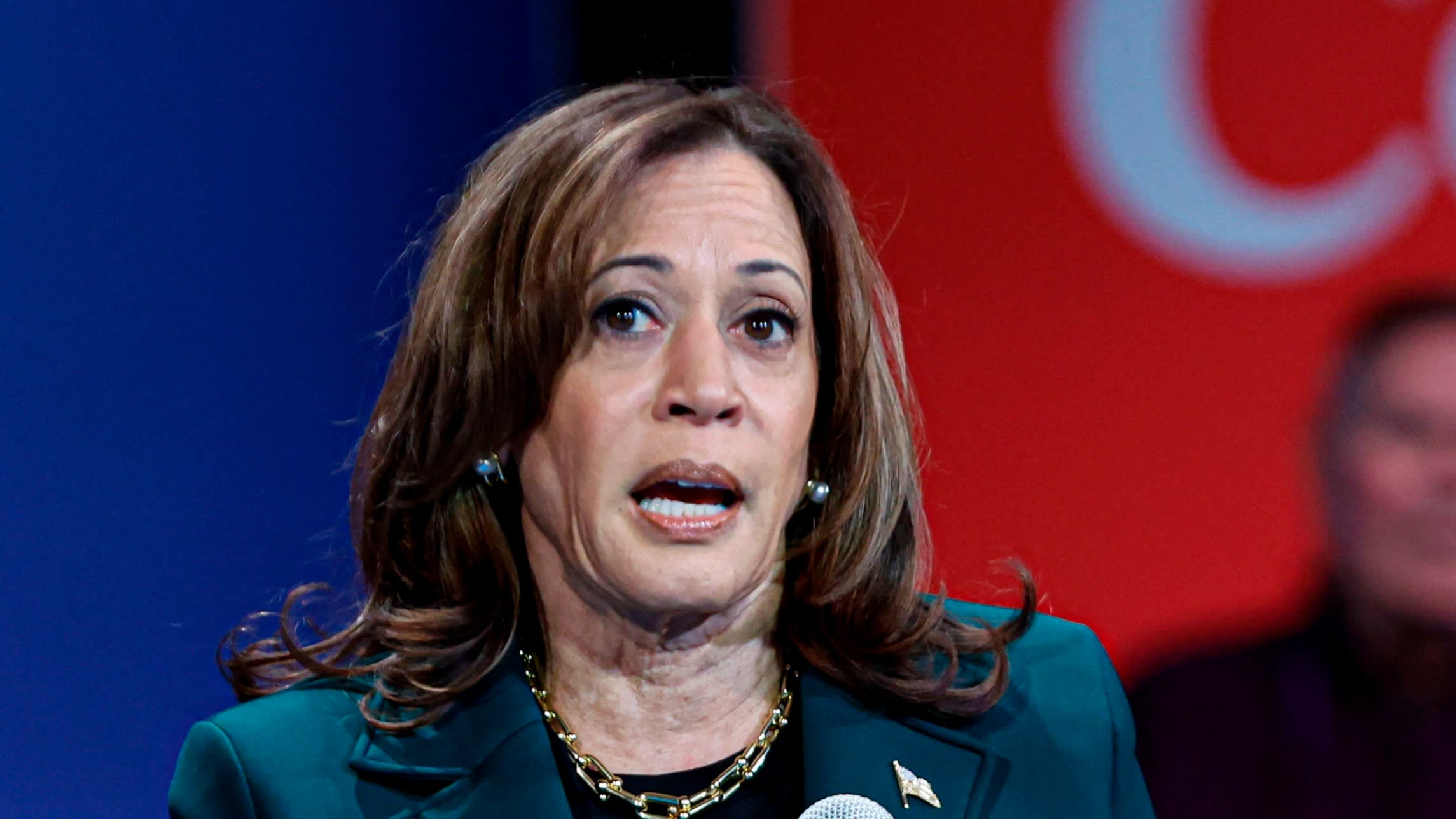Business
IMF warns of ‘round-tripping’ fears
Technique to shift risk to investors may have ‘system-wide’ impact, fund warns
Business
UK Treasury to slash overseas aid in Budget as asylum seeker costs rise

International development organisations warn country’s contribution could slump to its lowest level in 17 years
Money
Is Now the Right Time to Invest in Gold Prices Near $2,800?

Gold Prices Are Nearing the $2,800 Mark: Is It a Good Time to Invest?
The gold market has seen remarkable growth throughout 2024, with prices reaching new heights and breaking multiple records. The bull market for gold began in early March when prices soared to $2,160 per ounce, marking an 8% increase from the previous record set in December 2023. This upward trend has continued, with gold prices consistently breaking records as they climb. Currently, prices are approaching $2,800 per ounce. This rapid increase has led to substantial gains for investors who entered the market earlier this year. For instance, those who bought gold in March at $2,160 per ounce have experienced a nearly 27% rise in value since then. This is a significant increase in just a few months, especially for an asset typically associated with long-term growth. However, while early investors have reaped the benefits of this price surge, potential newcomers may be questioning whether now is the right moment to invest. The idea of purchasing at such high prices seems to contradict the fundamental investment principle of buying low and selling high. So, is it wise to invest in gold at this premium price?
Is Now the Right Time to Invest in Gold?
When considering your investment strategy, it’s essential to align it with your personal goals. That said, there are several compelling reasons to consider adding gold to your portfolio at this moment, despite its elevated price.
Potential for Further Price Appreciation
Although gold is currently trading near $2,800 per ounce, many analysts believe there is still potential for prices to rise even more. Some forecasts suggest that gold could hit $3,000 per ounce by the end of the year or shortly thereafter. This optimistic outlook is supported by several factors:
- Institutional Demand: Central banks worldwide are increasingly purchasing gold, which strengthens demand and supports higher prices. In 2023, they acquired over 1,136 metric tons, the highest in over five decades.
- Limited Supply: The finite nature of gold means that as demand increases, prices are likely to rise due to scarcity. Many major gold mines are approaching depletion, adding pressure to the supply chain.
- Industrial Applications: Gold is increasingly utilized in various industries, including electronics and healthcare. This growing industrial demand further enhances its value, as new applications create additional reasons for businesses to seek gold.
By investing now, you may be setting yourself up to take advantage of potential price increases in the future, even if the current price seems steep. Delaying your purchase might result in missing out on a more favorable entry point.
Safeguarding Against Economic Uncertainty
While inflation has eased considerably in recent months, it’s not the only economic factor that could affect your investment strategy. The global economy is still grappling with various challenges, such as persistent geopolitical tensions and economic instability. Historically, gold has been viewed as a dependable safeguard against these uncertainties, making it a wise choice to invest in now. Here’s how it can shield you in a volatile economic landscape:
- Preserving Purchasing Power: Gold has historically maintained its value over time, helping investors protect their purchasing power in the face of inflation and currency fluctuations.
- Safe-Haven Asset: During periods of economic distress or geopolitical tensions, gold often sees a surge in demand, serving as a reliable store of value when other investments falter.
- High Liquidity: Gold is easily convertible to cash, offering financial flexibility. Whether through physical gold or gold ETFs, investors can liquidate their holdings quickly during economic downturns, ensuring access to necessary funds.
The Importance of Portfolio Diversification
One of the key reasons investors include gold in their portfolios is its unique relationship with other assets. Gold has historically demonstrated a low or negative correlation with stocks and bonds, meaning that when the stock market faces downturns, as it has recently, gold often remains stable. By adding gold to your portfolio now, even at current elevated prices, you’re incorporating an asset that doesn’t move in tandem with traditional investments. This helps to lower the overall risk and volatility of your portfolio, ensuring that even if other investments are underperforming, a portion of your wealth stays safeguarded.
The Key Takeaway
The recent rise in gold prices has led some investors to wonder if it’s the right moment to make a purchase. Although investing in any asset at its peak can feel risky, there are compelling reasons to consider adding gold to your portfolio, even at these higher prices. The possibility of further price increases, the necessity for a dependable safeguard against persistent economic instability, and the diversification advantages that gold offers all highlight its lasting worth as an investment.
Related: Should I invest in Gold?
Business
Harris to make unexpected campaign stop in Texas

Abortion and reproductive rights likely to be at heart of vice-president’s message in Republican-leaning state
Money
UK’s largest parcel delivery firm confirms final send dates to ensure Christmas presents get delivered on time

THE UK’s largest parcel delivery firm have announced their final send dates to ensure Christmas gifts arrive in time.
Evri has warned to send Christmas gifts as early as possible and not leave it to the last minute.
As the festive season approaches, Evri has announced its final send dates to ensure Christmas gifts reach loved ones in time.
With the busy Christmas period ahead, Evri is encouraging customers to send their parcels as early as possible to avoid any last-minute rush.
Thursday 19 December will be your last chance for courier collections.
The deadline for sending standard delivery parcels from ParcelShops will be on Friday 20 December by 11am.
And the final cut-off point for next-day parcels being drop off at a ParcelShop will be 11am on 21 December.
Additionally, in preparation for the busy Christmas season, Evri has extended its successful partnership with the Post Office.
Starting in November 2023, this partnership allowed customers to send Evri parcels from 2,000 branches for the first time in the Post Office’s long history.
By the end of October 2024, more than 3,200 Post Office branches will offer Evri parcel drop-off services – significantly expanding Evri’s network to over 16,800 locations across the UK.
This includes Post Offices, Tesco Express stores, lockers, and many independent convenience stores.
Depending on the weight and size of your parcel, you could send your parcels from as little as £2.62 with Evri.
Find your nearest Evri ParcelShop here.
Evri UK domestic Christmas posting deadlines
- Thursday 19th December: Last day for courier collections.
- Friday 20th December by 11am: Deadline for sending standard delivery parcels from ParcelShops.
- Saturday 21st December by 11am: Last chance for next-day delivery parcels from ParcelShops.
It comes as Royal Mail is set to make a major change to second class postal services as part of a new shake-up.
Under an overhaul being considered by the industry watchdog, the postal service could be allowed to ditch Saturday deliveries for second class letters.
Regulator Ofcom, which has been consulting on the future of the universal postal service since January, said it is now focusing efforts on changes to the second class service while keeping first class deliveries six days a week.
Under the plans being considered, second class deliveries would not be made on Saturdays and would only be on alternate weekdays, but delivery times would remain unchanged at up to three working days.
Ofcom said no decision had been made and it continues to review the changes, with aims to publish a consultation in early 2025 and make a decision in the summer of next year.
Royal Mail has urged the Government and Ofcom to review its obligations, arguing that it is no longer workable or cost-effective, given the decline in addressed letter post.
In its submission to Ofcom in April, it proposed ditching Saturday deliveries for second class post and cutting the service to every other weekday.
Lindsey Fussell, Ofcom’s group director for networks and communications, said: “If we decide to propose changes to the universal service next year, we want to make sure we achieve the best outcome for consumers.
“So we’re now looking at whether we can get the universal service back on an even keel in a way that meets people’s needs.
“But this won’t be a free pass for Royal Mail – under any scenario, it must invest in its network, become more efficient and improve its service levels.”
NO SERVICE DAYS
ROYAL Mail operates round the clock throughout most of the year.
But there are a handful of days when no delivery and collection services are offered:
- New Year’s Day
- Good Friday
- Easter Monday
- Early May Bank Holiday
- Spring Bank Holiday
- Summer Bank Holiday
- Christmas Day
- Boxing Day
Travel
Major airline introduces new boarding system that stops the ‘worst kind’ of airport passengers

A NEW system could soon stop those annoying passengers who try to board the plane too early.
American Airlines is rolling out the new technology at a number of airports.
Back in 2018, a study by London Stansted Airport and YouGov revealed the top 10 most annoying passenger habits at the airport.
Queue jumpers came out on top.
American Airlines’ new system will see a loud sound played for passengers who scan their boarding pass at the gate if they are boarding in the wrong group.
They will then be told by staff to wait for their group to be called.
Currently in place at Albuquerque International Sunport airport and Tucson International Airport, the airline will test it at others including Ronald Reagan Washington National Airport (DCA).
A spokesperson told Travel and Leisure: “We are in the early phase of testing new technology used during the boarding process.
“The new technology is designed to ensure customers receive the benefits of priority boarding with ease and helps improve the boarding experience by providing greater visibility into boarding progress for our team.”
And there is a reason airlines board from front to back too, and it’s to encourage passengers to buy more expensive tickets.
First boarding usually include those in first class and business class, as well as frequent flyers.
Despite this leading to huge queues in the aisle for economy passengers, experts have said the priority boarding can entice travellers to book tickets in a better class.
In theory, the best way to board a plane would be all of the window seats, followed by middle seat and aisle.
United Airlines currently uses the WILMA system, which stands for “window-middle-aisle”.
Otherwise there is also a boarding technique called the ‘Steffen method’.
This would implement the window-middle-aisle technique, but board all odd rows before even rows.
This means allowing more space between rows for passengers to put bags in overhead lockers and get into their seats.
But until all airlines roll this out, you can expect passengers to still crowd at the gates, especially on budget flights where there is limited overhead locker space.
This annoying airport habit is known as gate-licing – where passengers congregate at the boarding gate even if they are not called for boarding.
Brian Hart Hoffman, who was a flight attendant for eight years, told the Thrillist that crew “absolutely hate” gate lice.
He added: “There is no need for it and it absolutely hinders the flow of boarding.”
Luggage Rules for Major Airlines
British Airways
- Cabin Baggage: 1 cabin bag (max 56 x 45 x 25 cm) and 1 personal item (max 40 x 30 x 15 cm), total weight up to 23 kg.
- Checked Baggage: Economy allows 1 bag up to 23 kg. Premium Economy, Business, and First Class allow more.
EasyJet
- Cabin Baggage: 1 small cabin bag (max 45 x 36 x 20 cm), no weight limit but must fit under the seat.
- Checked Baggage: Fees apply, up to 23 kg per bag. Passengers can pay for additional weight up to 32 kg.
Ryanair
- Cabin Baggage: 1 small bag (max 40 x 20 x 25 cm). Priority boarding allows an additional larger cabin bag (max 55 x 40 x 20 cm, up to 10 kg).
- Checked Baggage: Fees apply, options for 10 kg or 20 kg bags.
Virgin Atlantic
- Cabin Baggage: Economy and Premium allow 1 cabin bag (max 56 x 36 x 23 cm, up to 10 kg). Upper Class allows 2 bags.
- Checked Baggage: Economy Light has no checked baggage. Economy Classic, Delight, and Premium allow at least 1 bag up to 23 kg. Upper Class allows 2 bags.
Emirates
- Cabin Baggage: Economy allows 1 bag (max 55 x 38 x 20 cm, up to 7 kg). Business and First Class allow 2 bags (total up to 12 kg).
- Checked Baggage: Economy Class varies by fare type (from 20 kg to 35 kg). Business and First Class allow up to 40 kg and 50 kg respectively.
Business
Private equity management fees fall to lowest level since records began

Fund managers are fighting to secure investors’ money in a tough environment
-

 Science & Environment1 month ago
Science & Environment1 month agoHyperelastic gel is one of the stretchiest materials known to science
-

 Technology4 weeks ago
Technology4 weeks agoIs sharing your smartphone PIN part of a healthy relationship?
-

 Science & Environment1 month ago
Science & Environment1 month ago‘Running of the bulls’ festival crowds move like charged particles
-

 Science & Environment1 month ago
Science & Environment1 month agoHow to unsnarl a tangle of threads, according to physics
-

 Science & Environment1 month ago
Science & Environment1 month agoMaxwell’s demon charges quantum batteries inside of a quantum computer
-

 Technology1 month ago
Technology1 month agoWould-be reality TV contestants ‘not looking real’
-

 Science & Environment4 weeks ago
Science & Environment4 weeks agoX-rays reveal half-billion-year-old insect ancestor
-

 Science & Environment1 month ago
Science & Environment1 month agoSunlight-trapping device can generate temperatures over 1000°C
-

 Science & Environment1 month ago
Science & Environment1 month agoLiquid crystals could improve quantum communication devices
-

 Science & Environment1 month ago
Science & Environment1 month agoQuantum ‘supersolid’ matter stirred using magnets
-

 Womens Workouts4 weeks ago
Womens Workouts4 weeks ago3 Day Full Body Women’s Dumbbell Only Workout
-

 Science & Environment1 month ago
Science & Environment1 month agoLaser helps turn an electron into a coil of mass and charge
-

 Technology3 weeks ago
Technology3 weeks agoUkraine is using AI to manage the removal of Russian landmines
-

 TV3 weeks ago
TV3 weeks agoসারাদেশে দিনব্যাপী বৃষ্টির পূর্বাভাস; সমুদ্রবন্দরে ৩ নম্বর সংকেত | Weather Today | Jamuna TV
-

 Science & Environment1 month ago
Science & Environment1 month agoWhy this is a golden age for life to thrive across the universe
-

 Science & Environment1 month ago
Science & Environment1 month agoQuantum forces used to automatically assemble tiny device
-

 Science & Environment1 month ago
Science & Environment1 month agoA new kind of experiment at the Large Hadron Collider could unravel quantum reality
-

 Science & Environment1 month ago
Science & Environment1 month agoNerve fibres in the brain could generate quantum entanglement
-

 Science & Environment1 month ago
Science & Environment1 month agoHow to wrap your mind around the real multiverse
-

 Science & Environment1 month ago
Science & Environment1 month agoA slight curve helps rocks make the biggest splash
-

 News1 month ago
News1 month ago▶️ Hamas in the West Bank: Rising Support and Deadly Attacks You Might Not Know About
-
Business3 weeks ago
DoJ accuses Donald Trump of ‘private criminal effort’ to overturn 2020 election
-

 Football3 weeks ago
Football3 weeks agoRangers & Celtic ready for first SWPL derby showdown
-

 News2 weeks ago
News2 weeks agoNavigating the News Void: Opportunities for Revitalization
-

 News3 weeks ago
News3 weeks agoMassive blasts in Beirut after renewed Israeli air strikes
-

 Business3 weeks ago
Business3 weeks agoWhen to tip and when not to tip
-

 Science & Environment1 month ago
Science & Environment1 month agoITER: Is the world’s biggest fusion experiment dead after new delay to 2035?
-

 News1 month ago
News1 month ago▶️ Media Bias: How They Spin Attack on Hezbollah and Ignore the Reality
-

 Science & Environment1 month ago
Science & Environment1 month agoNuclear fusion experiment overcomes two key operating hurdles
-

 MMA3 weeks ago
MMA3 weeks agoJulianna Peña trashes Raquel Pennington’s behavior as champ
-

 Sport3 weeks ago
Sport3 weeks agoWales fall to second loss of WXV against Italy
-

 Science & Environment1 month ago
Science & Environment1 month agoPhysicists have worked out how to melt any material
-

 Science & Environment1 month ago
Science & Environment1 month agoTime travel sci-fi novel is a rip-roaringly good thought experiment
-
News1 month ago
the pick of new debut fiction
-

 News1 month ago
News1 month agoOur millionaire neighbour blocks us from using public footpath & screams at us in street.. it’s like living in a WARZONE – WordupNews
-

 Technology3 weeks ago
Technology3 weeks agoMicrophone made of atom-thick graphene could be used in smartphones
-

 Technology3 weeks ago
Technology3 weeks agoSamsung Passkeys will work with Samsung’s smart home devices
-

 News2 weeks ago
News2 weeks ago▶ Hamas Spent $1B on Tunnels Instead of Investing in a Future for Gaza’s People
-

 MMA3 weeks ago
MMA3 weeks agoPereira vs. Rountree prediction: Champ chases legend status
-

 Sport3 weeks ago
Sport3 weeks agoBoxing: World champion Nick Ball set for Liverpool homecoming against Ronny Rios
-

 MMA2 weeks ago
MMA2 weeks ago‘Uncrowned queen’ Kayla Harrison tastes blood, wants UFC title run
-

 Technology4 weeks ago
Technology4 weeks agoWhy Machines Learn: A clever primer makes sense of what makes AI possible
-

 Technology1 month ago
Technology1 month agoMeta has a major opportunity to win the AI hardware race
-

 Sport3 weeks ago
Sport3 weeks agoWorld’s sexiest referee Claudia Romani shows off incredible figure in animal print bikini on South Beach
-

 News3 weeks ago
News3 weeks agoFamily plans to honor hurricane victim using logs from fallen tree that killed him
-

 Technology3 weeks ago
Technology3 weeks agoThis AI video generator can melt, crush, blow up, or turn anything into cake
-

 Sport3 weeks ago
Sport3 weeks agoSturm Graz: How Austrians ended Red Bull’s title dominance
-

 TV2 weeks ago
TV2 weeks agoLove Island star sparks feud rumours as one Islander is missing from glam girls’ night
-

 Sport2 weeks ago
Sport2 weeks agoCoco Gauff stages superb comeback to reach China Open final
-

 MMA3 weeks ago
MMA3 weeks agoDana White’s Contender Series 74 recap, analysis, winner grades
-

 Technology3 weeks ago
Technology3 weeks agoMusk faces SEC questions over X takeover
-

 News3 weeks ago
News3 weeks ago‘Blacks for Trump’ and Pennsylvania progressives play for undecided voters
-

 Money3 weeks ago
Money3 weeks agoWetherspoons issues update on closures – see the full list of five still at risk and 26 gone for good
-

 MMA2 weeks ago
MMA2 weeks agoPereira vs. Rountree preview show live stream
-

 Sport3 weeks ago
Sport3 weeks agoMan City ask for Premier League season to be DELAYED as Pep Guardiola escalates fixture pile-up row
-
Business3 weeks ago
Bank of England warns of ‘future stress’ from hedge fund bets against US Treasuries
-

 Business3 weeks ago
Business3 weeks agoChancellor Rachel Reeves says she needs to raise £20bn. How might she do it?
-

 MMA3 weeks ago
MMA3 weeks agoAlex Pereira faces ‘trap game’ vs. Khalil Rountree
-

 News3 weeks ago
News3 weeks agoHeartbreaking end to search as body of influencer, 27, found after yacht party shipwreck on ‘Devil’s Throat’ coastline
-
Business3 weeks ago
Sterling slides after Bailey says BoE could be ‘a bit more aggressive’ on rates
-

 Technology3 weeks ago
Technology3 weeks agoTexas is suing TikTok for allegedly violating its new child privacy law
-

 Technology2 weeks ago
Technology2 weeks agoThe best budget robot vacuums for 2024
-

 News2 weeks ago
News2 weeks agoHeavy strikes shake Beirut as Israel expands Lebanon campaign
-

 Science & Environment1 month ago
Science & Environment1 month agoPhysicists are grappling with their own reproducibility crisis
-

 Science & Environment1 month ago
Science & Environment1 month agoA tale of two mysteries: ghostly neutrinos and the proton decay puzzle
-

 TV3 weeks ago
TV3 weeks agoPhillip Schofield accidentally sets his camp on FIRE after using emergency radio to Channel 5 crew
-

 News3 weeks ago
News3 weeks agoGerman Car Company Declares Bankruptcy – 200 Employees Lose Their Jobs
-

 TV3 weeks ago
TV3 weeks agoMaayavi (මායාවී) | Episode 23 | 02nd October 2024 | Sirasa TV
-

 Technology3 weeks ago
Technology3 weeks agoPopular financial newsletter claims Roblox enables child sexual abuse
-

 News2 weeks ago
News2 weeks agoBalancing India and China Is the Challenge for Sri Lanka’s Dissanayake
-

 News3 weeks ago
News3 weeks agoHull KR 10-8 Warrington Wolves – Robins reach first Super League Grand Final
-

 Technology2 weeks ago
Technology2 weeks agoA very underrated horror movie sequel is streaming on Max
-

 Technology2 weeks ago
Technology2 weeks agoThe best shows on Max (formerly HBO Max) right now
-

 Entertainment3 weeks ago
Entertainment3 weeks ago“Golden owl” treasure hunt launched decades ago may finally have been solved
-

 Sport1 month ago
Sport1 month agoJoshua vs Dubois: Chris Eubank Jr says ‘AJ’ could beat Tyson Fury and any other heavyweight in the world
-
Business3 weeks ago
Eurosceptic Andrej Babiš eyes return to power in Czech Republic
-

 News1 month ago
News1 month agoYou’re a Hypocrite, And So Am I
-

 Science & Environment1 month ago
Science & Environment1 month agoRethinking space and time could let us do away with dark matter
-

 Science & Environment1 month ago
Science & Environment1 month agoCaroline Ellison aims to duck prison sentence for role in FTX collapse
-
News1 month ago
The Project Censored Newsletter – May 2024
-

 Technology4 weeks ago
Technology4 weeks agoArtificial flavours released by cooking aim to improve lab-grown meat
-

 Technology3 weeks ago
Technology3 weeks agoUniversity examiners fail to spot ChatGPT answers in real-world test
-

 Science & Environment3 weeks ago
Science & Environment3 weeks agoMarkets watch for dangers of further escalation
-

 Technology3 weeks ago
Technology3 weeks agoAmazon’s Ring just doubled the price of its alarm monitoring service for grandfathered customers
-

 News3 weeks ago
News3 weeks agoWoman who died of cancer ‘was misdiagnosed on phone call with GP’
-

 Sport3 weeks ago
Sport3 weeks agoChina Open: Carlos Alcaraz recovers to beat Jannik Sinner in dramatic final
-

 Technology3 weeks ago
Technology3 weeks agoApple iPhone 16 Plus vs Samsung Galaxy S24+
-

 Technology3 weeks ago
Technology3 weeks agoUlefone Armor Pad 4 Ultra is now available, at a discount
-

 News3 weeks ago
News3 weeks agoReach CEO Jim Mullen: If government advertises with us, we’ll employ more reporters
-
Business3 weeks ago
Maurice Terzini’s insider guide to Sydney
-

 MMA3 weeks ago
MMA3 weeks agoUFC 307 preview show: Will Alex Pereira’s wild ride continue, or does Khalil Rountree shock the world?
-
Business3 weeks ago
Head of UK Competition Appeal Tribunal to step down after rebuke for serious misconduct
-

 Money2 weeks ago
Money2 weeks agoWhy thousands of pensioners WON’T see State Pension rise by full £460 next year
-

 Technology2 weeks ago
Technology2 weeks agoHow to disable Google Assistant on your Pixel Watch 3
-

 Sport3 weeks ago
Sport3 weeks agoAaron Ramsdale: Southampton goalkeeper left Arsenal for more game time
-

 Technology2 weeks ago
Technology2 weeks agoIf you’ve ever considered smart glasses, this Amazon deal is for you
-

 Technology3 weeks ago
Technology3 weeks agoEpic Games CEO Tim Sweeney renews blast at ‘gatekeeper’ platform owners
-

 Football3 weeks ago
Football3 weeks agoSimo Valakari: New St Johnstone boss says Scotland special in his heart
-
Business3 weeks ago
LVMH strikes sponsorship deal with Formula 1
-
Business3 weeks ago
Top shale boss says US ‘unusually vulnerable’ to Middle East oil shock




You must be logged in to post a comment Login